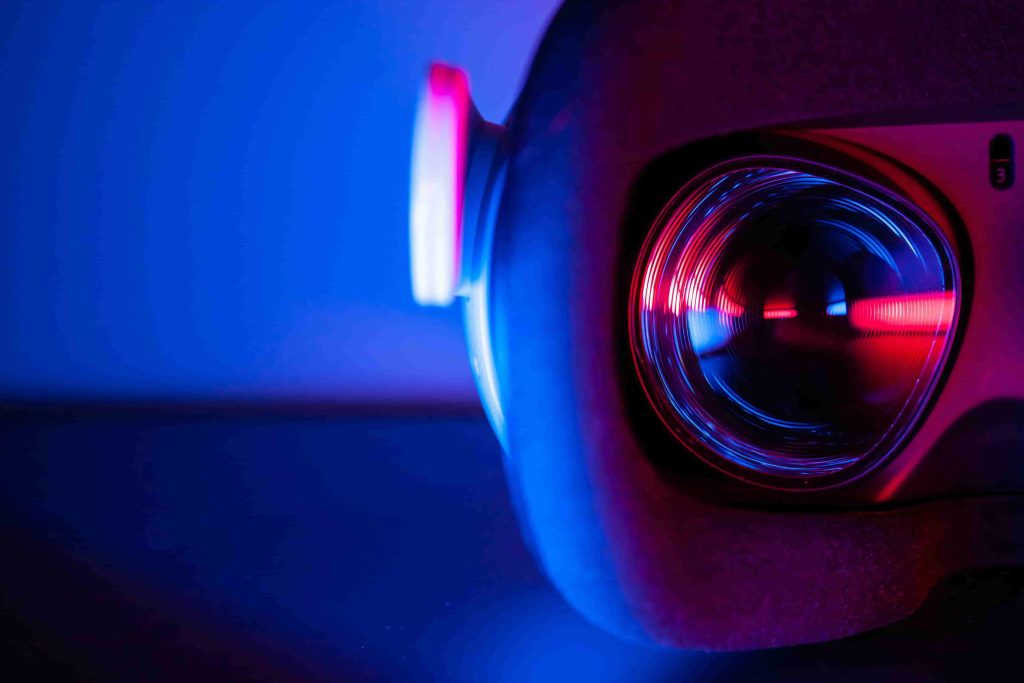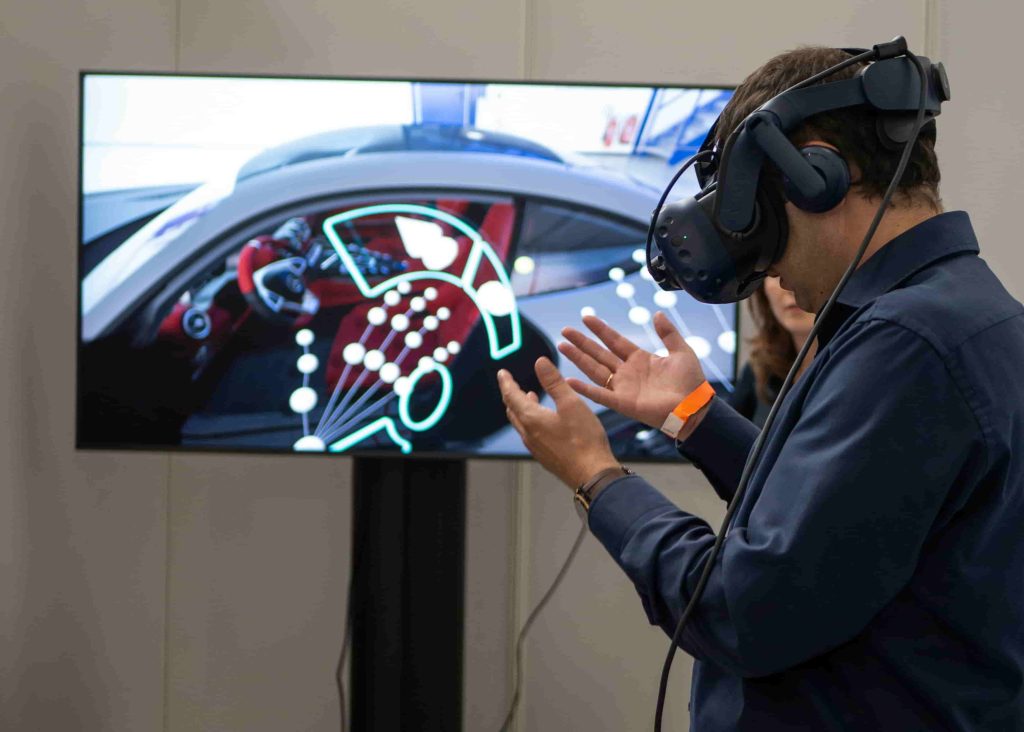For years, augmented reality (AR) and virtual reality (VR) hovered at the edges of mainstream tech. Now, with Apple’s Vision Pro introducing the concept of “spatial computing,” the boundary between digital and physical experiences is fast blurring. No longer just for gaming, AR/VR is expanding into business use cases, combining with AI and IoT to shape everything from workplace collaboration to retail experiences. Below, we explore Vision Pro’s significance, how spatial computing transcends entertainment, and why devs should learn 3D development and mixed reality skills.
1. Apple’s Vision Pro: Why It’s a Game Changer

1.1 A “Spatial Computing” Platform
- Mixed Reality Headset: Apple’s Vision Pro, released in early 2024, merges VR (fully immersive) with AR (augmented overlays).
- New Interaction Paradigm: Instead of tapping on a phone or typing on a keyboard, you interact via gestures, eye tracking, and voice—extending the user interface into 3D space.
Implication: Devs can create experiences where digital elements blend seamlessly with the real environment—holograms pinned to walls or entire virtual rooms overlaying physical space.
1.2 Evolving AR/VR Ecosystem
- Developer SDK: Apple’s visionOS includes specialized frameworks for 3D rendering, spatial audio, and intuitive gesture tracking.
- Rival Moves: Meta’s Quest line, Microsoft’s HoloLens, and other AR/VR devices push the industry to refine hardware and content.
- Early Smartphone Era Vibes: Much like 2008–2010 catalyzed mobile apps, 2024–2026 could see a wave of AR/VR apps that transform daily tasks, from remote collaboration to immersive training.
Result: For devs, the time is ripe to experiment, building pilot apps that harness 3D gestures or environment mapping. Those who master these mediums can shape the next generation of user experiences.
2. Spatial Computing Goes Mainstream

2.1 Business Applications
- Remote Collaboration: Virtual whiteboards or 3D design sessions let distributed teams gather “in person” from anywhere.
- Training & Simulation: AR overlays can guide technicians or surgeons step by step, while VR immerses trainees in controlled yet realistic simulations.
- Retail & E-commerce: Shoppers can visualize furniture in their actual living room or try on clothes virtually, bridging the gap between online convenience and in-store tangibility.
Trend: AI can provide real-time object recognition or context-based overlays, while IoT sensors feed live data—like temperature or machinery status—into the AR layer, enabling real-time insight in factories or fields.
2.2 Entertainment & Beyond
- Immersive Gaming: VR goes beyond simple wave controllers—spatial computing can incorporate your entire environment, letting you roam or defend a “base” laid over your living room.
- Virtual Concerts: Musicians experiment with AR backdrops or VR “venues,” letting fans attend from anywhere in the world with a shared sense of presence.
Next Step: As devices become lighter and more comfortable, mainstream adoption might mimic the smartphone revolution. The difference: it’s a new dimension—3D experiences instead of flat screens.
3. Developer Skills: Unity, Unreal, and visionOS
3.1 3D Engines: Unity & Unreal
- Unity: Known for game dev, but also widely used for AR experiences (ARKit integration on iOS, ARCore on Android).
- Unreal Engine: High fidelity rendering suits AAA gaming, architectural visualization, or cinematic VR.
- Cross-Platform: Both engines help devs build once, deploy across multiple hardware lines—reducing duplication even if each headset brand has unique SDK tie-ins.
Dev Advice: Starting with Unity for simpler prototyping or picking Unreal for advanced visuals can be a gateway to building robust AR/VR apps. Both have vibrant dev communities and asset libraries.
3.2 Apple’s visionOS SDK
- Dedicated Tools: Apple’s frameworks for 3D gesture tracking, environment mapping, and pass-through visuals.
- Familiar Ecosystem: If you know Swift or SwiftUI, you can adapt to developing layered 3D experiences, hooking into sensors or XR-based UI components.
- Opportunities: Early app store presence for Vision Pro can yield brand new markets—like a wave of iPhone apps in 2009.
Tip: Keep up with Apple’s official docs, dev forums, or any pilot programs. The first wave of visionOS apps might set design standards for AR/VR interfaces, from hierarchical menus to 3D gesture-based controls.
4. AI and IoT Convergence
4.1 AI for Real-Time Understanding
- Object Recognition: Using ML models, AR overlays can label or highlight items in your environment. Example: identifying product parts in a factory or analyzing a painting’s background info in a museum.
- Speech & Gesture: Tools interpret user instructions (“Place the 3D model over there”), bridging voice commands with 3D space for fluid interactions.
Outcome: Freed from manual scanning or button clicks, users rely on natural commands—a synergy of AI, 3D engines, and advanced XR hardware.
4.2 IoT Data Feeds
- Augmented Workflows: Factories with sensors streaming temperature or pressure data can overlay them in VR, letting operators see anomalies or calibrate machines with intuitive gestures.
- Home & Retail: In a store, staff wearing AR headsets might see real-time inventory statuses floating near shelves, speeding restocking. Or in a home, you see power usage stats or climate data pinned to your living room wall.
Implication: The “physical-digital” bridging intensifies as IoT sensors feed data into an always-on, context-aware AR environment.
5. Challenges & Considerations

5.1 Hardware Limitations
- Battery Life: Headsets often drain power quickly, restricting session lengths or requiring tethers. Apple’s Vision Pro, for instance, might rely on an external battery for extended use.
- Comfort & Motion Sickness: Extended AR/VR sessions can cause discomfort. Devs must design stable, user-friendly movement or camera transitions to reduce VR sickness.
5.2 Privacy & Security
- Always-On Cameras: Spatial computing devices rely on outward-facing sensors. Handling environment scans or user gestures demands strong privacy policies.
- User Data: Eye-tracking or face scans are sensitive data. Devs must ensure compliance with data protection laws, encryption in transit/stored signals, and user consent.
Dev Note: Rely on secure frameworks for scanning or environment mapping, and store minimal user analytics to respect privacy.
6. Looking Forward: A New Ecosystem Emerges
- App Store for AR/VR: Vision Pro paves the way for an XR-specific store, featuring immersive productivity apps, collaborative design tools, or next-gen social experiences.
- Enterprise Embraces: Expect big industry verticals—manufacturing, healthcare, real estate—to adopt XR solutions for training, remote assistance, or 3D data visualization.
- Deeper AI Integration: Spatial computing plus generative AI might yield real-time holographic assistants or context-based instructions—like “show me assembly instructions for this machine part.”
Conclusion: The synergy of advanced headsets, robust 3D engines, AI, and IoT signals a new computing paradigm. Devs who harness these tools—Unity/Unreal, Apple’s visionOS, or other XR frameworks—will shape the next wave of digital-physical experiences.
Conclusion
AR/VR and spatial computing—sparked by Apple’s Vision Pro and major XR hardware launches—signal that the line between digital and physical is rapidly blurring. From enterprise training to immersive consumer apps, the potential extends far beyond gaming or entertainment. For developers, skill sets spanning Unity/Unreal or visionOS become crucial, bridging 3D user interfaces with AI or IoT data to build holistic experiences. While hardware comfort and privacy remain challenges, the path is clear: spatial computing forms the next big frontier, merging real-world context with digital content for a brand-new era of computing.















